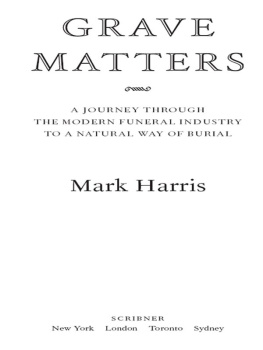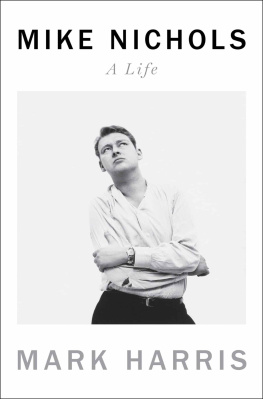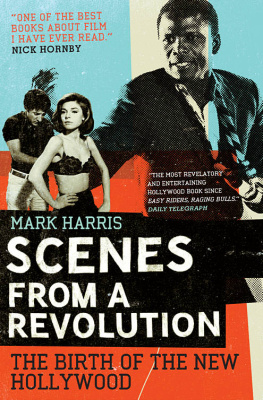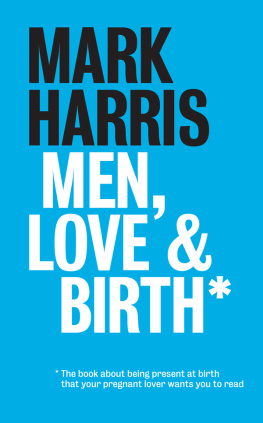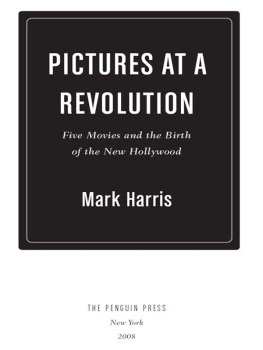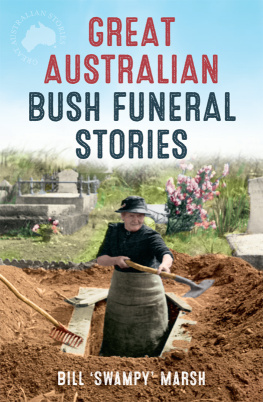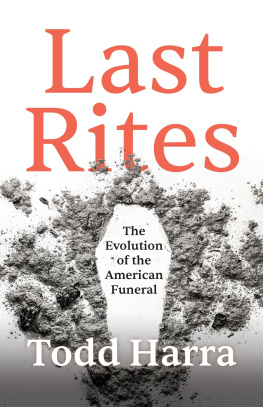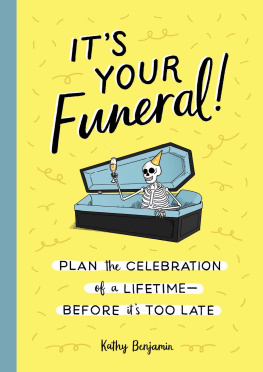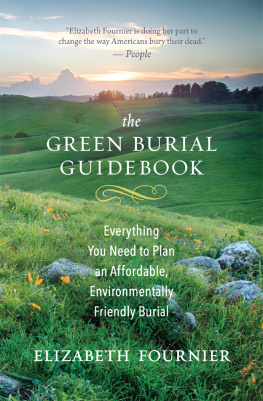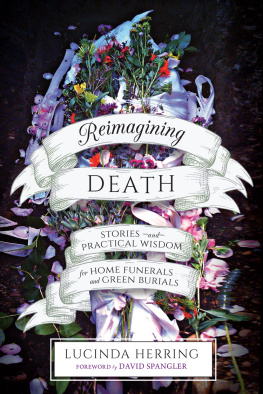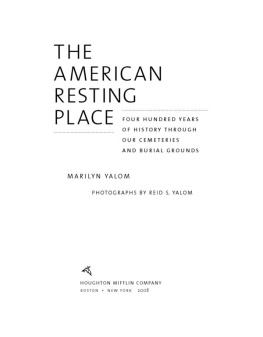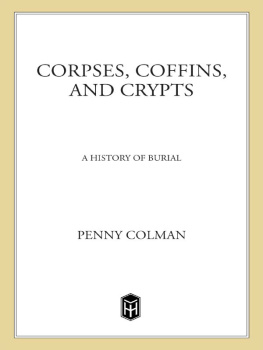Every book is in some way a communal act, and this one has benefited from the involvement of a particularly rich community. Numerous families granted lengthy and repeated interviews in which they recounted the decline, passing, and memorialization of their loved ones, and then sent along a wealth of materialsfrom photographs and funeral programs to eulogies and death certificatesthat made the writing of this book possible. Im indebted, in particular, to the following for their willingness to share the story of perhaps the most profound event in their lives: Sandy Booth, Cheryl Hedman, Joan Hopkins, Janet King, Ed McKenna, Dan Mullen, Jim Nichols, Sharon Perry, Carrie Slowe, and Smiggy Smith. I hope to have done their trust justice in these pages.
Bill Sucharski welcomed me into his Philadelphia crematory with an openness I frankly found astonishing, and allowed me to witness much of the cremation process. My warmest thanks to him and to staffers Andrew Meredith and Jay McGee. Paul Rahill at Matthews Cremation Division explained in detail the operation of the companys cremation units, and Jack Springer of the Cremation Association of North America provided valuable insights on a number of issues relating to cremation. The Mercury Policy Projects Michael Bender offered background on the mercury emissions of crematoria.
Ken and Anya Shortridge arranged to have me witness a sea burial with the King family only to later deal with the stress of my late arrival into San Diego. Many thanks to them for their forbearance and willingness to help out in numerous ways with this project. On board the Bay Watch, Bill Whalen and Jerry Heath patiently answered my many queries as they went about their duties. Ellis Kjer of the California Cemetery and Funeral Bureau and Patricia Pechko at the EPA were particularly helpful in explaining regulations regarding burial at sea, as was Tim Nicholson at the U.S. Naval Mortuary Affairs about requirements for military sea burial.
For the chapter on memorial reefs, George Frankel went out of his way to connect me with Carrie Slowe, and he and Don Brawley invited me to observe the casting process in Sarasota and later deployment of finished memorial reefs off Ocean City. Larry Little of Reef Innovations helped make sense of what I was seeing. Todd Barber of the Reef Ball Foundation told the story of Eternal Reefss genesis. Bill Figley reviewed for me the history of and purpose behind the reef building program he launched in New Jersey. Little of my interviews with Dave OFerrall and Mary Simpson made it into the final chapter, but Im grateful to them for sharing their thoughts at the Sarasota casting.
Donna Belk took my cold call looking for leads to families in the Austin, Texas-area, who had conducted home funerals, directed me to Sally Barnsley, and offered her insights into home funerals and the role she played in Sallys mother-in-laws. A kind thank-you to Regina, who told me about the evening she spent at her deceased aunts bedside, and to Robert Cisneros for his history of Old Jones Cemetery. Susan Rodriguez filled me in on Texas law as it relates to home funerals. Beth Knox relived, yet again, the events surrounding her daughters death and home wake, and invited me to attend one of her workshops on home funerals. Im indebted to Beth for her many contributions to this book.
Jane and Loren Schieuer agreed to ask a number of their customers to indulge me with an interview, and Loren freed up an afternoon to show me around his Iowa woodworking shop. Many other woodworkers around the country talked to me about their forays into coffin-building, among them Horace Bailey, James Casey, Craig Convissor, Bud Davis, Dienna Genther, Davis Griffith, Mark Hansen, Rand Herzberg, Paul Kester, Paul Meehan, Eric Tamm, and Byron Worley. A special thanks to Carolyn Jensen and Willy von Bracht for sending leads to their clients.
I met Jane Mullan at Beth Knoxs home funeral workshop in Virginia, where she told me about the private cemetery where she helped bury her good friend. As much as anyone, Jane has had to tolerate my multiple interviews, and did so with much grace. Michael Soule and Susan Levick helped me to picture Sharyns burial. For information on backyard cemeteries, Im grateful to Isabel Berney, Greg Jeane, Gregory Stoner, and Donna Fisher.
This book started as an idea that formed as I walked through the woodland burial ground at Ramsey Creek in South Carolina one summer afternoon a few years ago with Kimberley Campbell, and then afterward as I interviewed Billy Campbell over many cups of tea in the warm company of Kimberley and her parents. Billy and Kimberley have generously shared their many experiences and insights into the green burial movement theyve launched and nurtured in this country. This book would have been a much poorer venture without their on-going assistance.
Of the many funeral directors I interviewed, Dan Rohling, author of Funeral Information, was the most forthcoming and helpful, spending many hours spelling out the details of and rationale behind embalming and the modern funeral, with a candor that bespeaks an honest and caring professional. Thanks also to Joe Weigel at Batesville Casket and to George Lemke, of the Casket & Funeral Supply Association of America, for fielding my queries on issues related to casket production.
At the EPA, Karen Johnson and Mark Nelson educated me on septic systems and embalming waste. Regarding funeral home effluent and sewer treatment plants, pretreatment coordinators Tom Uva, Andy Rudzinski, and David Houston were most helpful.
I cannot thank Lisa Carlson (of the Funeral Ethics Organization) and Josh Slocum (of the Funeral Consumers Alliance) enough. They graciously shared their vast wealth of knowledge from the beginning of this project, fed me countless leads, willingly and quickly reviewed and corrected selections I beamed up to them. An early conversation with Josh redirected the focus of the coffin chapter. Lisa and Josh are a familys best advocates in all things related to death care in this country, and their efforts on behalf of this book proved why.
Mary Woodsen could have written this book herself. Im indebted to her for her encouragement, assistance, and invitation into the green burial movement she has been instrumental in getting off the ground.
Among the many researchers, proconsumer funeral advocates, and assorted experts who offered leads and information, Id particularly like to thank Bill Bass, Gary Laderman, Karen Leonard, Jerrigrace Lyons, Julian Trick, Julie Weatherington-Rice, and John Wilkerson. My work occasioned numerous discussions about death and burial, many of them drawn from personal experience. For those I thank Adelaide and Leonard Ortwein, Don Midway, Gail Justice, and Michele Mullen. A special thanks to Bob Brill, Rik Scarce, and Tom and Mary Dougal for pursuing leads in the funeral industry. Im grateful, as well, to the families whose stories I was not able to use but which added to my understanding of natural burial: Elmer Blackburn, Luann Dunkerley, Teri Hackler, Lauri Werth, Patrick Ginnaty, Christina Haskin, Craig Gidding, and Bonnie Ramey, among them.
At Moravian College, the AfterWords Cafe in Reeves Library provided a welcoming work environment when the walls of my home office closed in. Reevess reference librariansBonnie Falla, Dorothy Glew, and Linda Lapointe, in particularhelped me tap the wealth of resource material at the librarys command, and Debbi Gaspar and Nancy Strobel retrieved a raft of research materials I consulted in the course of my research. Many thanks to them, and to Moravians environmental readers group, which critiqued an early draft of the natural cemetery chapter.
The friends in my mostly monthly writers groupRuth Setton, Paul Acampora, Virginia Wiles, and Joyce Hinnefeldfollowed this project from proposal to finished manuscript, and gave constructive advice and, for me, the first sense that natural burial had merit as a book topic. I owe a special debt to Joyce, who encouraged my foray into book writing and believed in this idea. For Jim Hauser, a heartfelt thanks for, among many other things, the reality checks, the push I needed to finally submit this proposal, and a way to present the concept.

